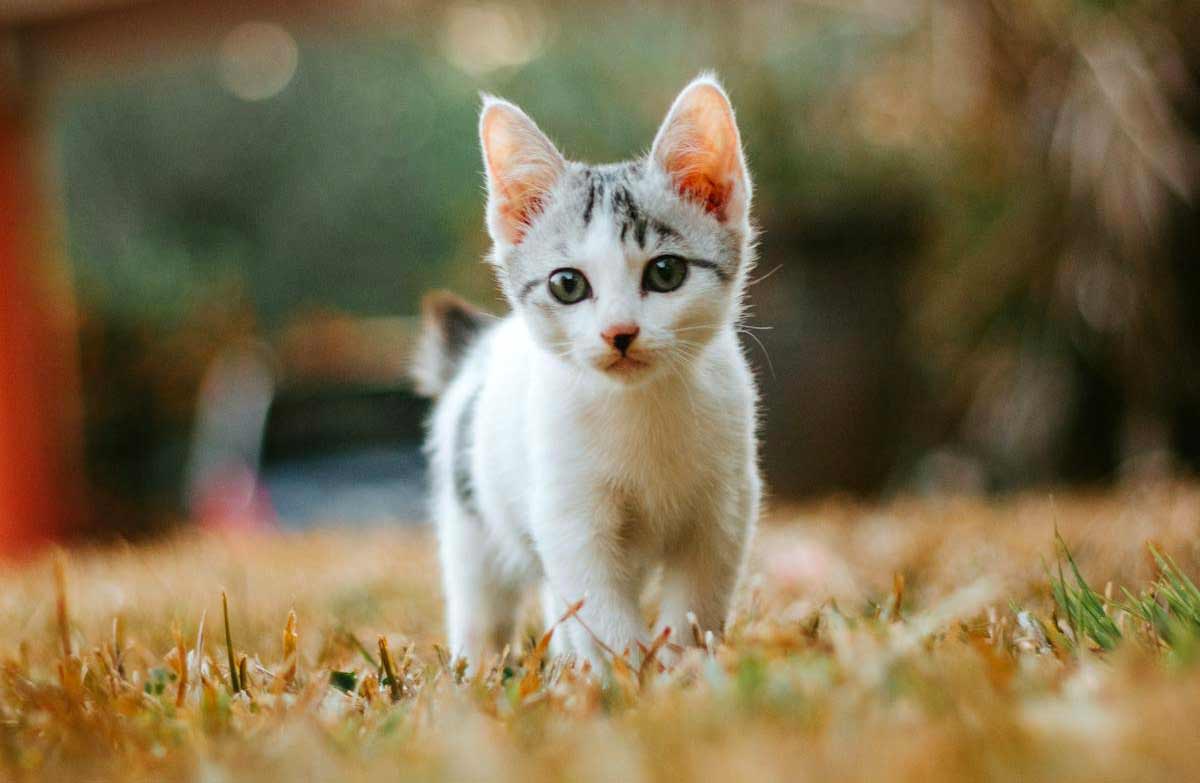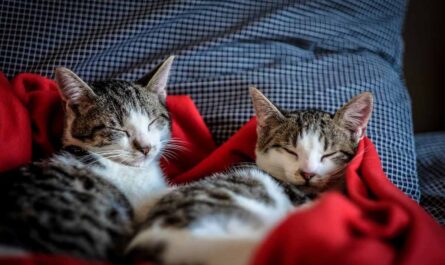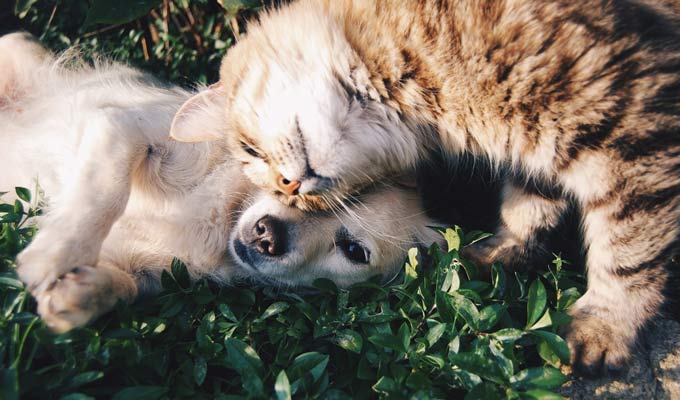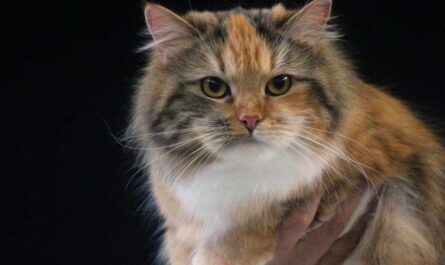How many kittens can a cat give birth to? Have you ever witnessed the miracle of a cat giving birth? It’s a truly heartwarming sight – a proud mama cat tenderly grooming her newborn bundles of joy, each one a tiny ball of purring fluff with eyes that haven’t quite figured out the world yet. But before you get swept away by the cuteness overload, a question might be lingering in your mind: how many of these adorable furballs can you expect?
This article is here to be your guide on the fascinating world of cat litters. We’ll delve into the factors that influence the number of kittens a cat might have, explore breed variations, and even touch upon some practical considerations for caring for a newborn brood. So, buckle up, cat lovers, as we explore the delightful mystery of how many tiny paws might soon be pitter-pattering around your home!
Demystifying the Numbers Game: A Range of Possibilities
First things first, predicting the exact number of kittens in a litter can be a bit like guessing how many jellybeans are in a jar. There’s a range to consider, and while some lucky cat parents might be surprised by a single tiny miracle, others might find themselves cradling a whole cuddle puddle of newborns. The key takeaway here is to be prepared for a range of possibilities – and to shower them all with equal love, of course!
Statistically speaking, the average litter size for a cat falls somewhere between four and six kittens. However, this is just an average, and several factors can influence the number of kittens a cat gives birth to. Let’s delve deeper and explore what these factors might be:
- Breed Matters: Just like humans, different cat breeds have varying tendencies when it comes to litter size. Persians, for example, are known for typically having smaller litters, sometimes just one or two kittens. On the other hand, Siamese and Burmese breeds might bless you with a larger brood, sometimes numbering as high as eight or even ten kittens!
- Age Matters Too: A mother cat’s age can also play a role in litter size. Younger cats (around 6 months old) and senior cats (over 8 years old) might have smaller litters compared to cats in their prime breeding years (between 2 and 5 years old).
Nature’s Orchestra: The Biology Behind Litter Size
The arrival of a litter of adorable kittens is a heartwarming sight! But have you ever wondered, just how many furry bundles of joy can a momma cat expect? The answer, like many things in nature, is a fascinating combination of biology and chance.
Ovulation & Implantation: The Rhythm of Reproduction
Just like humans, momma cats ovulate, releasing eggs from their ovaries. The number of eggs released can vary depending on the breed and age of the cat. These eggs then travel down a pathway called the fallopian tube, where they can be fertilized by sperm from a male cat.
Not all released eggs will become kittens, though. Only a certain number of fertilized eggs will successfully implant in the mother cat’s uterus, where they will develop into kittens. This implantation process is like a tiny seed taking root and preparing to grow.
Superfecundation: A Rare Twist
Here’s an interesting fact! Did you know that a momma cat can mate with more than one male cat during her fertile window? This is called superfecundation. In rare cases, superfecundation can lead to kittens in a litter having different fathers. This might explain why sometimes, you might see a litter with kittens of varying colors or fur patterns!
However, superfecundation isn’t the most common reason for variations in litter size.
Feline Health: A Momma Cat’s Wellbeing Matters
A momma cat’s overall health and nutrition play a significant role in determining the number of kittens in a litter. Think about it like this: a healthy momma with a strong body is better equipped to nourish and support the development of multiple kittens.
Conversely, if a momma cat is malnourished or has underlying health issues, it might affect the number of viable embryos that implant and develop into kittens. This is why ensuring proper veterinary care and a balanced diet throughout pregnancy is crucial for both the mother cat’s health and the well-being of her future litter.
Beyond Numbers: Factors Affecting Kitten Development
So, you’re curious about how many adorable little paws might come pitter-pattering into your life when your cat welcomes a new litter? While the exact number can vary, several fascinating factors influence the size and health of your feline friend’s upcoming bundle of joy. Let’s delve deeper and explore what goes beyond the number of kittens to create a happy and healthy arrival.
Prenatal Care: Setting the Stage for a Healthy Litter
Just like human moms, pregnant cats benefit greatly from proper prenatal care. Here’s how you can contribute to a thriving litter:
- Nutrition is Key: During pregnancy, your cat’s body is working hard to nourish developing kittens. Switching her to a high-quality kitten food packed with protein and essential nutrients ensures she has the building blocks needed for healthy fetal development.
- Regular Vet Check-Ups: Scheduling regular check-ups with your veterinarian throughout pregnancy allows them to monitor the health of both mom and kittens. Early detection of any potential concerns helps ensure a smooth delivery and a healthy start for the litter.
- A Safe and Comfortable Environment: Provide your cat with a quiet, stress-free environment where she feels secure. This will contribute to her overall well-being and indirectly create a positive environment for the developing kittens.
By prioritizing your cat’s prenatal care, you’re giving her the best chance to deliver a healthy and robust litter.
Stress Matters: Keeping Mom Calm for Kitten Well-being
Cats are incredibly sensitive creatures, and stress during pregnancy can have a significant impact on the litter. Here’s why a calm and relaxed environment is crucial:
- Stress Hormones: When a pregnant cat experiences stress, her body releases stress hormones. These hormones can negatively affect the development of the kittens and potentially lead to a smaller litter size.
- Reduced Immune System: Stress can also weaken a cat’s immune system, making it more susceptible to illness. This can indirectly impact the health of the developing kittens as well.
- Creating a Safe Haven: Minimize loud noises, sudden changes to the household routine, and unfamiliar interactions with other pets. Provide your cat with plenty of hiding spots and create a designated quiet space where she can feel safe and relaxed.
By minimizing stress factors and creating a calm environment, you’re not only promoting your cat’s well-being, but also contributing to the healthy development of her upcoming litter.
Natural Selection: Understanding the Biology of Litter Size
Nature has a way of ensuring the survival of the fittest, and this applies to feline pregnancies as well. Here’s a biological process that can influence litter size:
- Resorption: In some cases, a natural process called resorption can occur during early pregnancy. This means that non-viable embryos might be reabsorbed by the mother’s body.
- Survival of the Strongest: While this might sound harsh, resorption helps ensure that only healthy embryos continue to develop, maximizing the chances of a successful pregnancy and the birth of healthy kittens.
Remember, the number of kittens in a litter is just one aspect of the story. By focusing on proper prenatal care, minimizing stress, and understanding the natural biological processes at play, you can contribute to a happy and healthy arrival for your feline friend’s new litter.
When to Worry: Signs of Difficulty During Birth
The arrival of a litter of adorable kittens is a joyous occasion, but it’s important to be prepared for any potential challenges that might arise during the birthing process. Here’s a breakdown of what to expect and when to seek veterinary help:
The Birthing Process: A Feline Family in the Making
The feline birthing process typically unfolds in three stages:
- Stage 1 (Dilation): This is the preparatory stage, where your cat’s body prepares for delivery. You might notice restlessness, nesting behavior, and mild contractions lasting for several hours.
- Stage 2 (Delivery): This is when the kittens are born. Each kitten will be enclosed in a sac, which the mother cat will instinctively groom and break open. You might see some discharge during this stage, but it should be minimal and clear or slightly reddish.
- Stage 3 (Placenta Delivery): After each kitten is born, the mother cat will deliver the placenta (also known as the afterbirth). She will typically eat the placentas, which provides her with essential nutrients.
The entire birthing process can take anywhere from several hours to a full day, depending on the number of kittens and your cat’s individual biology.
It’s important to note: While some feline deliveries are smooth and uneventful, complications can sometimes arise. Here’s what to watch out for:
Red Flags to Watch For: When to Intervene
While it’s natural to want to be present and supportive during your cat’s delivery, it’s also crucial to know when to seek professional help. Here are some signs that might indicate trouble:
- Prolonged Labor: If your cat has been straining for more than two hours without delivering a kitten, it’s time to call your veterinarian.
- Difficulty Delivering: If you notice a kitten stuck in the birth canal for more than 30 minutes, or if there’s excessive bleeding, seek veterinary assistance immediately.
- Signs of Distress: Excessive vocalization, lethargy, vomiting, or a greenish discharge are all signs of potential distress and warrant a trip to the vet.
- No Kittens After 24 Hours: If your cat has been in labor for a full day without delivering any kittens, veterinary intervention is crucial.
Remember: Early detection and treatment of birthing complications can significantly improve the outcome for both your cat and her kittens.
Seeking Veterinary Assistance: Prioritizing the Health of Mom and Kittens
If you notice any of the warning signs mentioned above, don’t hesitate to contact your veterinarian immediately. Explain the situation in detail, and they will likely advise you to bring your cat to the clinic for a checkup. During the vet visit, they can assess the situation, provide any necessary medical intervention, and ensure the health and safety of both mom and kittens.
By being prepared and knowing when to seek professional help, you can contribute to a smooth and successful birthing experience for your feline friend and her precious new arrivals.
A Sea of Tiny Paws: Caring for a Newborn Litter
Congratulations! Your feline friend has given birth to a precious bundle (or perhaps bundles!) of joy. Those first few weeks with a newborn litter are a whirlwind of activity, but fear not – with a little preparation and knowledge, you can ensure a smooth and healthy start for your new arrivals.
Preparing the Nest: A Cozy Haven for Mom and Kittens
Just like human moms, momma cats need a safe and comfortable space to care for their newborns. Here’s how to create a cozy haven for your furry family:
- The Whelping Box: Repurpose a cardboard box (large enough for the mother cat to comfortably stretch out) as a whelping box. Line it with soft towels or blankets, ensuring they’re clean and free of any strong smells that might irritate the kittens.
- Location, Location, Location: Place the whelping box in a quiet, draft-free location away from high-traffic areas of your home. This will minimize stress for the mother cat and ensure the kittens stay warm and undisturbed.
- Keeping it Clean: Be prepared to change the bedding frequently, especially during the first few days when the kittens are still eliminating on themselves. A clean environment is crucial for preventing the spread of germs and keeping the kittens healthy.
- Warmth is Essential: Newborn kittens are unable to regulate their body temperature effectively. Provide a heating pad set on low (covered with a towel to prevent overheating) or use hot water bottles wrapped in towels to create a warm zone within the whelping box.
Remember, momma cats are incredibly instinctive when it comes to caring for their young. By providing a clean, comfortable, and warm environment, you’ll be giving them the perfect platform to nurture their precious litter.
Warmth is Key: Maintaining Optimal Temperature
As mentioned earlier, maintaining optimal temperature is crucial for newborn kittens. Here’s why:
- Sensitive to the Cold: Unlike adult cats, kittens cannot efficiently regulate their body temperature. Exposure to cold can quickly lead to hypothermia, a serious condition that can be fatal for young kittens.
- The Ideal Range: The ideal temperature for newborn kittens is between 85-90 degrees Fahrenheit (29-32 degrees Celsius) during their first week. You can gradually decrease the temperature by a few degrees each week as the kittens get older and become more adept at regulating their body temperature.
- Monitoring Temperature: Invest in a digital thermometer to monitor the temperature inside the whelping box. This allows you to adjust the heating source (or add additional bedding) as needed to maintain a comfortable and safe environment for the kittens.
By keeping the whelping box warm and cozy, you’ll be mimicking the natural warmth the kittens would receive from their mother’ This warmth is essential for promoting healthy growth and development.
Here’s a helpful tip: If you don’t have a thermometer, you can place your hand inside the whelping box for a few seconds. It should feel comfortably warm, not hot.
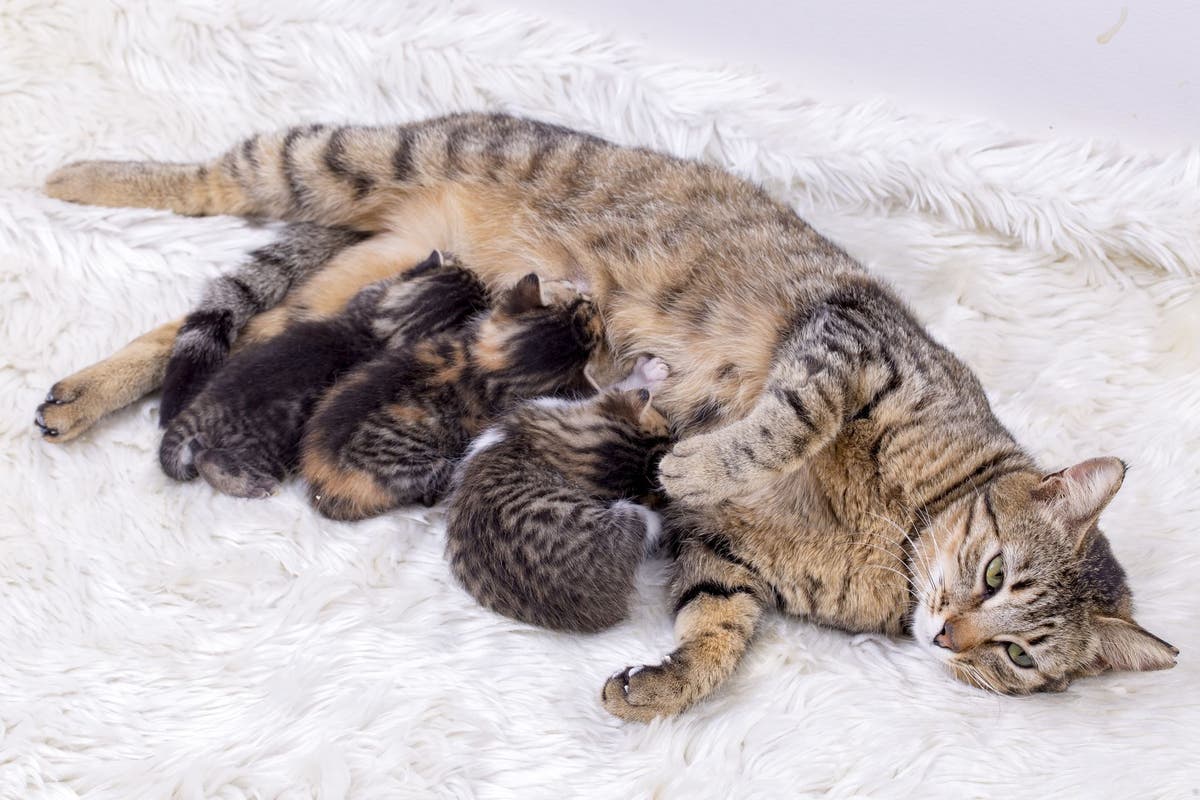
Weaning & Beyond: Guiding Kitten Development
Congratulations! Your furry friend has welcomed a litter of adorable kittens into the world. These tiny bundles of purring joy will grow and develop rapidly in the coming weeks, and you’ll play a vital role in nurturing them during this critical stage. Here’s a glimpse into what to expect as your precious kittens transition from nursing to independent little feline companions:
The Weaning Transition: A Natural Step Towards Independence
Nature has a remarkable way of ensuring the healthy development of young mammals. Just like human babies eventually transition from breast milk to solid food, kittens also go through a natural weaning process. This typically begins around 4-6 weeks of age, when the mother cat gradually starts producing less milk and the kittens become increasingly curious about exploring other food sources.
During this time, you might observe the kittens attempting to nibble on their mother’s food. This is a normal sign that their bodies are ready to start incorporating solid food into their diet.
Introducing Solid Food: A Gentle Culinary Adventure
While momma cat provides essential nutrients through her milk during the early weeks, introducing solid food is crucial for the healthy development of your growing kittens. Here’s how to navigate this culinary adventure:
- Kitten Formula is Key: Start by offering high-quality kitten formula specifically designed for their delicate digestive systems. Kitten formula is packed with essential nutrients and is easily digestible for their tiny tummies. How AI, ChatGPT maximizes earnings of many people in minutes
- Warming and Smoothing: Warm the kitten formula slightly before serving. The warmth mimics their mother’s milk and makes it more appealing. You can also smooth it out on a shallow plate to make it easier for them to lap up.
- Gradual Introduction: Patience is key! Don’t force the kittens to switch to solid food overnight. Begin by offering small amounts of formula several times a day alongside access to their mother’s milk. As they become comfortable with the new texture and taste, you can gradually increase the amount and frequency of feedings.
Remember, weaning is a gradual process that happens at the kittens’ own pace. By offering kitten formula and monitoring their eating habits, you’ll be providing the essential nutrients they need to thrive.
Socialization is Crucial: Building Confidence for Life
The period between 2-7 weeks of age is a critical window for socialization in kittens. During this time, they are particularly receptive to positive experiences with humans and other pets. These early interactions help shape their personalities and lay the foundation for their future behavior. Here’s how you can contribute to their social development: Motivation – Mind – Success – Thinking – Productivity – Happiness
- Gentle Handling: Spend time holding and petting the kittens regularly. Get them accustomed to different sights, sounds, and gentle handling. This will help them feel comfortable with human interaction and reduce future skittishness.
- Positive Introductions: If you have other pets in the household, introduce them to the kittens slowly and under careful supervision. Use positive reinforcement with treats and praise to create positive associations. Supervised playtime with older, gentle pets can also be beneficial.
- Supervised Exploration: Provide opportunities for safe exploration outside the nesting area. Let them experience different textures, sounds, and environments in a controlled setting. You can use cat trees, scratching posts, and safe toys to stimulate their curiosity and build their confidence.
By creating positive social experiences during this sensitive period, you’re helping your kittens blossom into well-adjusted, confident, and friendly feline companions. Business – Money Making – Marketing – E-commerce
Preparing for Adoption (applicable to litters born from unplanned pregnancies): Finding Forever Homes
If you weren’t expecting a litter of kittens, there are responsible ways to find them loving homes. Here are some tips to get you started:
- Reach Out to Rescue Organizations: Contact local animal shelters or cat rescue organizations. They may be able to help you find adoptive homes for your kittens or take them into their care.
- Screen Potential Adopters: If you decide to rehome the kittens yourself, carefully screen potential adopters to ensure the kittens are going to loving and responsible homes.
- Advertise Responsibly: When advertising your kittens, be upfront about their age, vaccination status, and any specific needs they might have.
- Spay/Neuter Pledge: Consider requiring potential adopters to sign a pledge to spay or neuter their kitten once they reach the appropriate age. This helps prevent future unplanned litters and contributes to a more responsible pet population.
Remember, spaying and neutering your cat is the single most effective way to prevent unwanted litters. If you’re not planning on breeding your cat, discuss spaying or neutering with your veterinarian at the earliest opportunity. Health books, guides, exercises, habits, Diets, and more
Other Interesting Articles
- How to Make Your Cat Really Happy: 29 Tips You May Try
- How to Train Your Cat to Stop Urine Marking? 12 Tips
- How Do Cats Communicate Each Other? 11 Body Language
- 24 Ways To Know If You Have An Extremely Happy Cat
- What Smells Do Cats Hate: 34 Scents You Must Avoid
- Everything You Need To Know About Cat Territory Marking
- 12 Reasons Why You Should Adopt A Second Cat
- 12 Reasons Cats Pee Outside the Litter Box: How To Solve
- 14 Reasons Why Cats Overgroom: Surefire Ways To Stop It
- Why is My Cat So Clingy? 13 Common Signs: 9 Caring Tips
- Is Your Cat Bored? 12 Common Signs: What You Can Do
- Stress in Cats: Causes, Symptoms, Remedies, Treatment
- 17 Common Signs Your Cat is Lonely: 10 Tips To Help Recover
- 14 Reasons My Cat is Acting Strange & Scared: What to Do?
- How Do Cats Hunt Their Prey, Mice, Bird, Fish, Rat For Food?
- How To Introduce A New Kitten To An Older Cat: 16 Tips
- 15 Reasons Why Do Cats Lick and Groom Each Other
- Domesticated Cats And Big Cats: 24 Similarities, Differences
- 21 Interesting Facts You Should Know About Feral Cats
- How to Socialize a Feral Kitten in 10 Simple Steps
